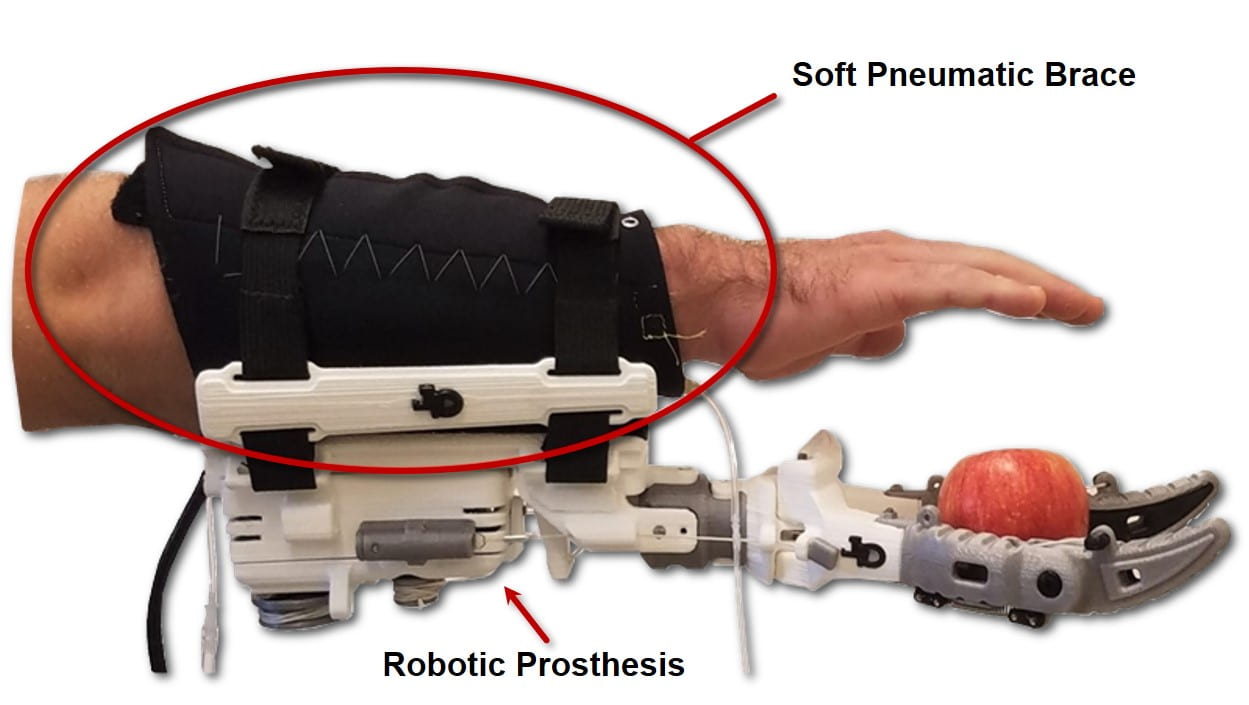Motivation: Surveys conducted of persons with upper limb amputations on their satisfaction with their prosthetic have shown that modern upper-extremity prosthetic devices are far from ideal. Persons with amputation consistently deal with discomfort, inconvenience, medical factors (blister formation and irritation), lack of functionality, and many more undesirable characteristics. The SASS project aims to improve the satisfaction of prosthetic users, with a focus for now on transradial applications.
Research Focus: The self-attaching smart socket (SASS) is designed to improve the comfort and convenience of a prosthetic by reverse engineering a conventional prosthetic socket, the part of the prosthetic that interfaces with the user. The SASS has two main subsystems: a soft pneumatic system (shown in the first and second figure) that acts as the socket for a prosthetic and a motorized rigid shell that wraps the soft pneumatic system around users’ forearm. The soft pneumatic system consists of a soft plastic film that can inflate to securely encompass users’ residual limbs. This flexibility is thought to improve the comfort and fit of the prosthetic even if the residual limb volume changes. A benefit of using the soft pneumatic system is that the pressure imparted on the individual is uniformly distributed and decreases pressure points caused by traditional sockets.
Currently, the ARM Lab is focusing on making the SASS attach itself to users without assistance in the hopes of increasing the convenience of their prosthetic. This self-attaching characteristic is thought to be especially beneficial for persons with bilateral amputations. Furthermore, the real-time control strategy for the SASS is also being designed so that the socket modulates the pressure imparted on users based on their activity. This real-time modulation should help improve the comfort of the device when users are at rest.
People
- Alexander Ambrose (PhD Student)
Publications
- Soft Pneumatic System for Interface Pressure Regulation and Automated Hands-Free Donning in Robotic Prostheses, A. Ambrose and F. Hammond III, 2020 IEEE International Conference on Robotics and Automation (ICRA), pp. 4848-4854.


